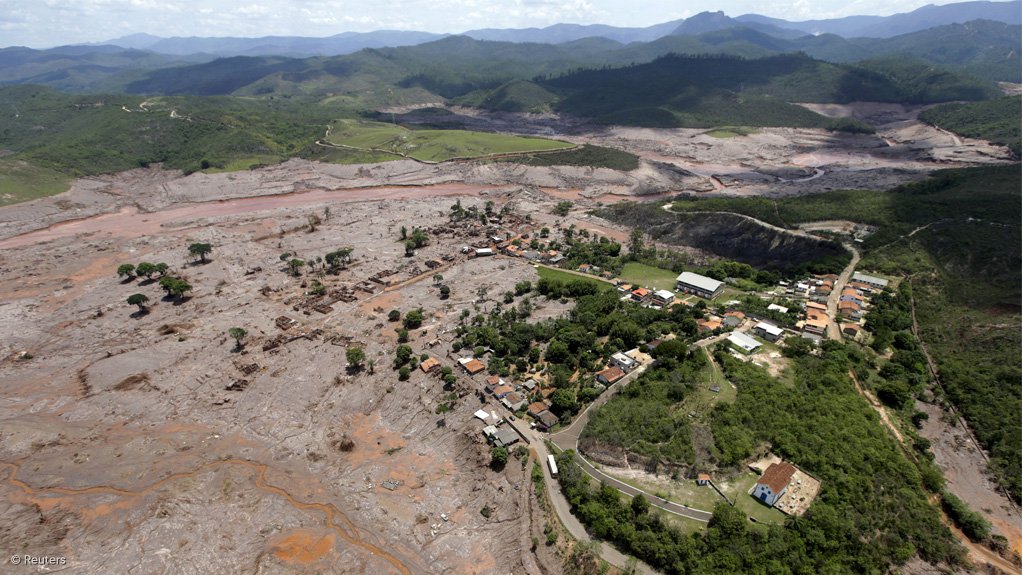JOHANNESBURG (miningweekly.com) – Diversified mining giant BHP Billiton has announced a number of actions to enhance the risk management of its dams, including creating a centralised dam management function and assessing technology options to enhance dam management across its portfolio.
BHP Billiton will also apply, with immediate effect, the Canadian Dam Association’s “rigorous” process for dam safety reviews at all of its minerals assets.
The dam management actions were announced on Tuesday, following the completion of an internal review of the significant dams at its operations and the publishing of an external report on the findings into the causes of the failure of the Fundão tailings dam at its Samarco joint venture with Vale in Minas Gerais, Brazil, in November last year.
The dam failure led to the death of 19 people and caused Brazil’s worst environmental disaster.
Together with Vale and Samarco, BHP Billiton commissioned Cleary Gottlieb Steen & Hamilton to investigate the cause of the failure.
“The failure of the Fundão tailings dam by liquefaction flowsliding was the consequence of a chain of events and conditions. A change in design brought about an increase in saturation, which introduced the potential for liquefaction,” stated the report, which is the result of a ten-month investigation.
Liquefaction is a process whereby a solid material, such as sand, loses strength and stiffness and behaves more like a liquid.
The first incident occurred in 2009, shortly after the starter dam was completed. Due to construction defects in the base drain, the dam was so badly damaged that the original concept could no longer be implemented. Instead, a revised design substituted a new drainage blanket at a higher elevation.
The second incident associated with slimes and water management occurred over an extended period of time in 2011 and 2012, while the new design was being constructed, with another incident occurring in late 2012, when a large concrete conduit beneath the dam’s left abutment, the secondary gallery, was found to be structurally deficient and unable to support further loading. This meant that the dam could not be raised over it until it had been abandoned and filled with concrete.
The straw that broke the camel’s back was the series of three small seismic shocks. According to media reports, this resulted in 32-million square metres of tailings moving at 11 m/s poured down the valley, carrying away villages and towns and swamping river systems on its way to the ocean.
“This important technical study will improve our understanding of what happened at Samarco. We have shared these findings so that the sector can learn from the dam failure and develop and implement further standards that can help prevent a similar event like this happening again,” BHP Billiton COO Dean Dalla Valle said.
Besides some of the dam management actions announced, BHP Billiton also said that it had contributed to a review initiated by the International Council on Mining and Metals into tailings management that would provide the industry with guidance to better manage the risks associated with tailings facilities.
The Samarco mine has been shut since the tailings dam burst in November and although it was originally expected to resume production this year, it seems more likely that the mine will only resume iron-ore production in 2017.
The dam disaster left BHP Billiton and Vale with a major civil claim, which the companies have said they will appeal. The $6.2-billion claim was reinstated by the Superior Court of Justice at the end of June.
Edited by: Mariaan Webb
Creamer Media Senior Deputy Editor Online
EMAIL THIS ARTICLE SAVE THIS ARTICLE
To subscribe email subscriptions@creamermedia.co.za or click here
To advertise email advertising@creamermedia.co.za or click here













